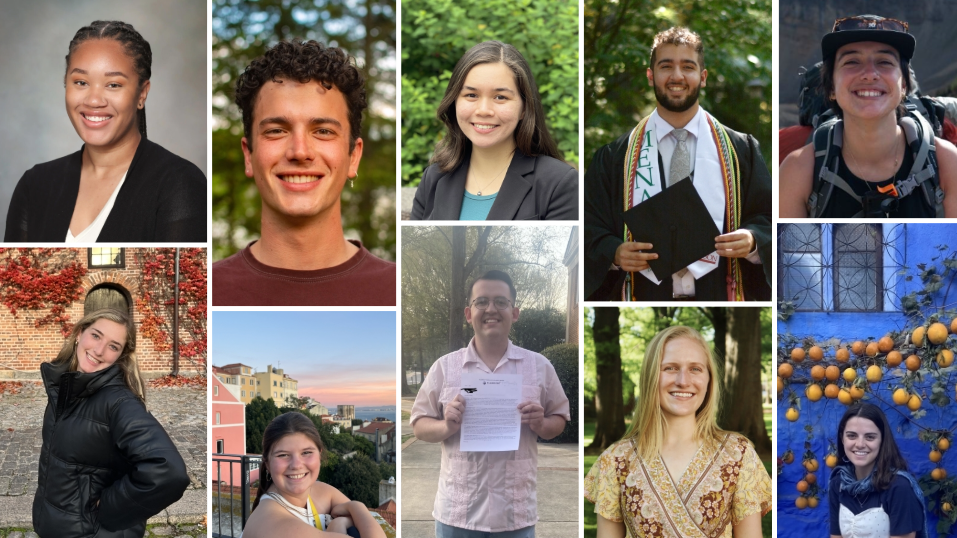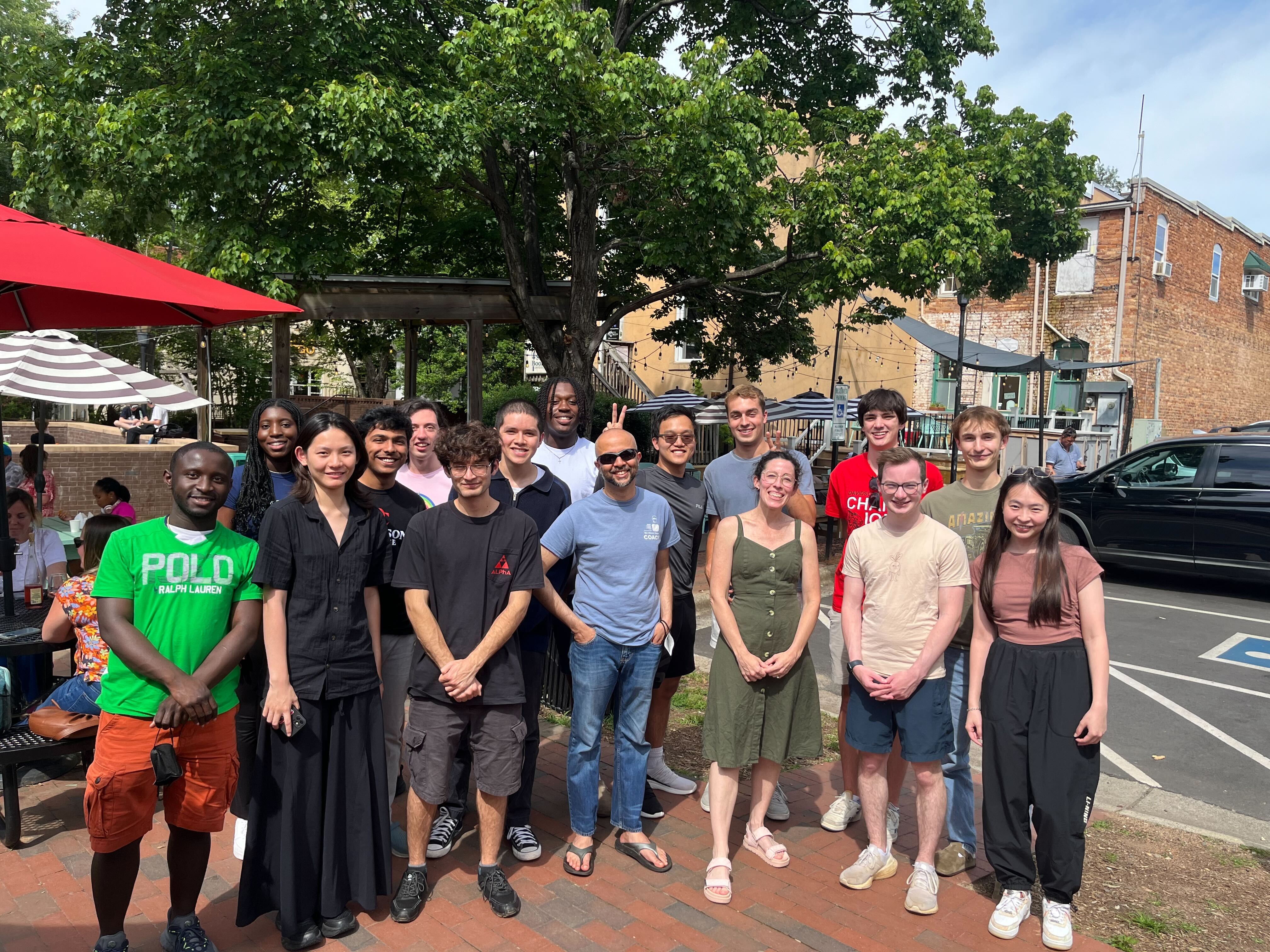Astronauts' Families Provide Emotional Gravity, Create Their Own Mission Control
October 29, 2021
- Author
- Mark Johnson

The family enjoys a stay on the Hawaiian island of Kauai.
In fourth grade, Grace Marshburn’s class used a video link to talk with her dad, who was on the International Space Station.
The SpaceX rocket launch has been postponed until Nov. 6.
Her mother, Ann, a pediatric hospitalist, has had to take a call from space while on rounds in the hospital.
Their family once spent two months living in Kazakhstan, where it hit minus-40 degrees, leading up to dad-and-husband Tom Marshburn’s launch aboard a Russian Soyuz space capsule.
Astronauts draw much attention for the extraordinary excitement, complexity and danger of their work. Their families live their own exceptional experiences that span pride to amusement to fear—all of which ratchet up in the days before launch.
“It’s slowly starting to hit,” Grace Marshburn said in a recent Zoom interview. She’s continuing her freshman year at Brown University by remote while she, her mother and her dad quarantine, first, at their home near Houston and, next, in a Florida hotel near Kennedy Space Center. The quarantine is a routine, pre-spaceflight safety measure, rather than COVID-related, though the ease of taking classes online ranks among the few benefits of the pandemic.
Tom Marshburn, a Davidson College alum, and three crewmates are scheduled to launch aboard the SpaceX Crew Dragon capsule “Endurance” and a Falcon 9 rocket on Sunday. They will live and work aboard the space station for six months.
The topic of Tom’s work routinely comes up. Ann suspects the medical school residents talk about it a bit more when she’s not around. For Grace, it happens at some point when she’s meeting someone new at school: “There’s no subtle way to say it.”
Spotlight to Normalcy
The media glare zeroed in on astronaut families in the early days of the space program, when the star sailors were hailed as national heroes who rode the first rockets, drove Corvettes and waterskied with Jackie Kennedy. When an astronaut was on a mission, reporters swarmed the front yard and chronicled the slightest activity.
Eric Anders was four years old when his father, Bill, flew aboard Apollo 8 with the first humans to reach and orbit the moon.
“A picture of me smiling and with my thumb up ended up on the front page of some major newspapers with a caption something like, ‘Astronaut's Son Gives Apollo 8 the Thumbs-Up,’” Anders told PBS. “The story I heard later was that I had been sucking my thumb, and then pulled it out when I was approached by all the reporters. A camera caught my thumb on the way down. I dispute this, of course.”
Astronauts’ wives took on the family burdens during months of training, the stress of the mission and the post-flight publicity tours. If approached by media, the company line was: “proud, thrilled and happy,” a phrase credited to Rene Carpenter. Carpenter, who died last year, was married to Scott Carpenter, one of the original Mercury 7 astronauts and the second American to orbit the earth. She wrote for Life magazine that astronauts’ wives “present gallant faces to the world, and inside we are as tough as the heat shield that arcs behind our husbands’ backs.”
Families tracked their astronaut’s mission through the “squawk box,” a radio speaker in their home that carried the radio traffic between Mission Control and the crew.
“You could sit there for hours and just listen,” Jay Lovell, son of Apollo 13 commander Jim Lovell, told PBS. “It was always on. It was basically like listening to a radio show, a drama or a mystery show. Of course, unless you knew the jargon you were totally lost. Everything at NASA was abbreviated. That's just how they talked.”
Americans landed on the moon, put Skylab in orbit, launched the first reusable ship, the shuttle, and helped build the International Space Station. The increased frequency of spaceflight and expanded astronaut corps reduced the media glare. An astronaut’s life grew more normal. Their rank among the number of people to fly in space was determined by seat assignment, and family connectivity grew easier. The Washington Post followed then-astronaut Steve Smith, the 200th American in space, in 1996, during the height of the shuttle years. By then he could use a private communication line to wish his daughter “happy birthday.”
“[Astronaut] Frank Borman read from the Book of Genesis from Apollo 8 on Christmas Eve,” the Post story said. “Steve Smith sang ‘The Barney Song’ from STS-68 on the day Shannon turned 2.”
Small Pieces and Connections
Tom Marshburn carried a small, stuffed otter from Grace when he flew to the space station aboard the shuttle Endeavour. She gave him a bear, appropriately, for his Soyuz flight, and a moose will accompany him and the SpaceX crew this week.

A stuffed moose will accompany Tom Marshburn to the International Space Station, courtesy of Grace Marshburn. The tradition began when Grace, now a freshman in college, was a young child.
His Halloween, Thanksgiving and Christmas cards from Ann and Grace are packed.
“Going home for Christmas when he’s not there will be different,” Grace said.
Astronauts Bob Behnken and Doug Hurley flew the first crewed SpaceX Dragon capsule in May of 2020. On launch day, their families could say goodbye from several feet away. Both men could be seen offering “air hugs” to their young sons before climbing into the customized Tesla that took them to the launch pad.
The Marshburns can email to and from the space station any time, and it’s instant, rather than the periodic, delayed upload of years past. Tom can call Ann and Grace each once a day and gets a 45-minute video link each week. Ann stays in touch with an astronaut in Houston who keeps her updated on the mission. There is no “squawk box,” because they can hear audio feeds online or, in the streaming age, turn on NASA TV.
Tom left his credit card number with a NASA colleague who can order flowers, food or gifts for his family and avoid the difficulty of explaining his “billing address.”
Kayla Barron, a Navy nuclear engineer and one of Marshburn’s crewmates, is married to a former Green Beret, Tom Barron. She said they liken the spaceflight to the multiple deployments they each served while the other was home.
“Tom [Barron] and I have learned how to have really hard conversations,” Barron said. “We’ve talked about what to do if the worst happens. We did that for deployments. You’re proud and excited for what’s coming. You trust NASA. You trust SpaceX that everybody is doing everything they can to keep us safe.”
She also suspects her mom is getting a little nervous.
Tom Marshburn, though not a military veteran, said he noted the deployment analogy to Ann and Grace, as well, adding that no one is shooting at him, other than some micrometeorites.
“They’re both experienced at it by now,” he said. “There are certain things that Grace doesn’t want to talk about. I’ll say ‘let’s watch Gravity’ [in which an astronaut doesn’t return] and she says ‘Nope.’”
Ann Marshburn said she routinely gets questions about worrying over Tom’s missions.
“People asked me, ‘How do you deal with that?’” she said. “I spent my life taking care of critically ill children, and people ask ‘How do you do that as a mother?’…I have these partitions in my brain…I’m going to put that over there.”
She also tries to be helpful, when possible, to the families of the other three crewmembers—all on their first flight.
“I want to be cognizant of the fact that they have the best launch experience they can have,” Ann Marshburn said. “It’s not until you get to Florida, and you [are in quarantine and] can’t go anywhere else that you really get to know each other…I do try, when I can, to impart a little ‘you might want to consider this.’”
A launch is an enormous, emotional and amazing event for families. It also heightens the separation.
“Who is the one person you want to tell about this?” Ann Marshburn said. “The one who isn’t there.”
After they return, astronauts want to download their experience. What happened at home dribbles out over the coming months, even years, Ann Marshburn said.
“Even now I will mention the names of some people we got to know here because of a mission, and Tom will say ‘Who are they?’” she said. “I will tell him that we send them Christmas cards every year, and he says, ‘We do?’”
A space mission puts astronauts above their world and, figuratively at least, in a different one.
Related Stories
This is the fifth in a series of reports on astronaut Tom Marshburn ’82 as he prepares for to make his third trip to the International Space Station Oct. 31.


